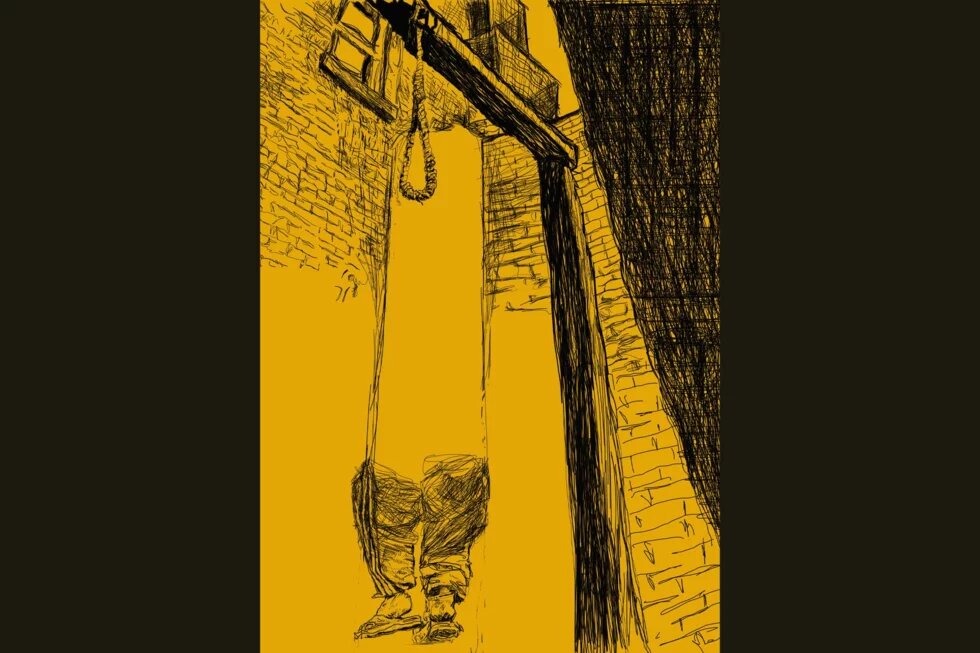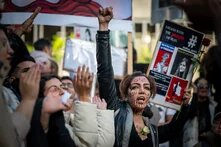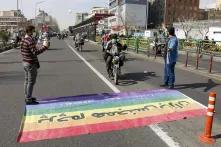In the shadow of the war with Israel, the Iranian regime stepped up its internal repression and resorted to even more politically motivated executions. As long as there are no real political consequences for the regime, state violence through capital punishment will continue.

The Israeli attack on Iran and the start of the twelve-day war in June 2025 marked the beginning of a new wave of executions in Iran, carried out under the shadow of war and justified as acts of “treason.” But it is not only the actual executions that send a message of intimidation into the Iranian society. The violence begins from the moment of accusation, spreading fear, uncertainty, and psychological trauma among detainees and their families. Today, capital punishment functions for the Iranian regime as a calculated mechanism of deterrence, designed to fracture protest movements and suppress resistance at its roots.
During the first four month of 2025 Iran saw a 75% increase in executions compared to the same period in 2024. A total of 343 people have been executed between January and April of this year.
Political executions in Iran did not begin with the 1979 revolution, but that moment marked a turning point, transforming the death penalty from an exception into a routine instrument of repression. The 1980s saw this violence at its peak, with mass executions and unmarked graves for political prisoners. Over the following decades, state executions continued, primarily targeting members of opposition groups such as the Mojahedin-e-Khalq (MKO) and ethnic minority parties, including Kurdish and Arab organizations.
In the past decade, amid growing street protests, executions have increasingly been used by the regime to deter dissent, from political and economic demonstrations to the "Woman, Life, Freedom" movement. The 2022 protests, the longest and most sustained since the revolution, were met with unprecedented brutality. Sparked by the death of Mahsa (Jina) Amini in police custody, the protests triggered a sharp increase in the use of capital punishment against ordinary protesters. Thousands were arrested and subjected to torture, with many forced into confessions, while vague, politicized charges such as Moharebeh ("waging war against God") and Fesad fel Arz ("corruption on earth") were used to justify executions.
The Surge in Death Sentences Post-2022 Protests
The 2022 nationwide protests in Iran marked a new phase in the Islamic Republic’s use of the death penalty. Protesters were arrested en masse, denied due process, and rushed through opaque trials with little to no legal defense. A stark example is the case of Mohsen Shekari, who was executed just 74 days after his arrest, following a closed trial that set a chilling precedent for others. Since then, the judiciary’s crackdown has continued. Human rights organizations report that at least 46 protest-related or national security defendants are now on death row. The regime routinely invokes broad charges, like Moharebeh, Fesad fel Arz, and Baghi (rebellion against an Islamic ruler), rooted in Islamic law but distorted for political ends. These charges are widely applied to silence protest and opposition. Forced confessions play a central role. Detainees are often tortured - physically and psychologically - into incriminating themselves or others. These coerced confessions, lacking credibility, have become the backbone of many convictions. For instance, in 2022, three young men arrested in Nowshahr - Mehdi Mohammadi-Fard, Arshia Takdastan, and Javad Rouhi - were reportedly tortured, and Rouhi was held incommunicado for weeks. These cases demonstrate the regime’s systematic use of the death penalty as a tool of fear and political control, built on forced confessions, vague charges, and arbitrary trials designed to suppress dissent.
State-Controlled Television Confessions
Forced confessions in Iran go beyond interrogation rooms - authorities record and broadcast them on state-controlled TV to justify executions and suppress dissent. This tactic has drawn international criticism. In 2013, the EU sanctioned the state-controlled TV network IRIB for airing forced confessions and violating human rights, freezing assets, and limiting cooperation. After the 2022 protests over Mahsa Amini's death, sanctions expanded to IRIB managers and channels like Press TV. Satellite providers were urged to stop broadcasting IRIB.
Despite this pressure, the practice continues. Recently, Mohsen Langarnejad was executed for alleged espionage. His confession was aired, even though leaked audio revealed he was coerced through threats and a mock execution.
A Gendered Dimension of State Violence
Although death sentences increased in 2022, overall the number of political executions - regardless of gender - has declined over the past two decades compared to the 1980s, but in 2023, three female political prisoners - Sharifeh Mohammadi, Verisheh Moradi, and Pakhshan Azizi - were sentenced to death. Such cases have been rare, and their timing after the "Woman, Life, Freedom" movement suggests the regime was alarmed.
The Supreme Court has upheld Pakhshan Azizi’s sentence, which can be carried out at any moment, causing widespread concern among activists. Sharifeh Mohammadi’s prosecution was also arbitrary: after her death sentence was overturned, it was reissued by a different judge, who was the son of the original judge, highlighting the political nature of these cases.
Despite fluctuations in executions, torture and intimidation remain constant against women activists, including Zeynab Jalalian and Maryam Akbari Monfared. Through repeated prosecutions, the state instrumentalizes the legal system to undermine women’s organizing, especially after the recent protests.
The history of women’s executions in the Islamic Republic warrants attention. Although women have faced capital punishment since the revolution, this practice has always been contested across the political spectrum. For instance, a recently released tape captures Ayatollah Hussein-Ali Montazeri, the former deputy leader, criticizing the hasty mass executions of the late 1980s. He specifically objected to sentencing women to death for Moharebeh, arguing that the charge should not apply to women because they are “weak.” Nevertheless, execution statistics from the first post-revolutionary decade show that this view was not widely held.
It is also important to consider the indirect consequences of executions, which often primarily affect women and the families of those executed. Consequences of executions have always reached far beyond the prisoners themselves, deeply affecting families, loved ones, and society as a whole.
The Broader Impact of Executions - Ordinary (Non-Political) Crimes and Social Harm
While Iran’s use of the death penalty extends beyond political repression, it disproportionately impacts marginalized and impoverished communities, particularly in drug-related cases. At least 901 people were reportedly executed in Iran in 2024, most of them for drug-related offences.
The execution of a family member often shatters a household’s economic stability, leaving women as unsupported heads of families who face increased structural and social violence, frequently without protection.
Women married as children are among the most at risk. Many endure years of abuse and may ultimately resort to fatal violence as a last resort. Such cases underscore the intersection of capital punishment, gender-based violence, and a justice system that fails to protect vulnerable women.
In 2024, at least 80 Afghan men were executed in Iran - more than three times the number recorded the previous year. These executions have had devastating consequences for the families of migrants, who are often left without their main breadwinner. Moreover, there are serious questions about whether these individuals received a fair trial and due process under the Iranian judicial system.
The Human Cost – Impact on Families and Communities
The impact of Iran’s judicial violence goes far beyond the courtroom. Not only executions, but accusations like Moharebeh or Fesad fel Arz can devastate lives, forcing families into silence out of fear. Families of political defendants often must choose between remaining silent in hopes of leniency or speaking out to attract attention. While human rights defenders advise early publicity, authorities pressure families to stay quiet with false promises or threats.
Many families, desperate to protect loved ones, believe these assurances, often realizing too late they were deceived. This enforced silence blocks timely intervention and leaves families anxious and uninformed as the judicial process moves quickly.
The wider community is also affected. Fear pushes activists underground or into exile, suppressing dissent. Yet many families persist - sharing information and appealing internationally, reflecting the resilience of community resistance.
Media and International Response and Its Limitations
Independent Persian-language media abroad, human rights groups, and international agencies play a key role in breaking the enforced silence on politically motivated accusations and verdicts. By reporting on early arrests and rushed trials, they disrupt the state-imposed silence and increase public pressure.
Mohsen Shekari’s execution - simply for blocking a street during the “Woman, Life, Freedom” protests - was carried out when security agencies prevented any information about his case from leaking before the execution. This silence enabled the authorities to act quickly and quietly. The regime pressures families and detainees to prevent public attention. Interrogators tell detainees, “Confess so that pressure on the Islamic Republic is relieved.” This shows the state’s awareness of international sensitivity and its efforts to control the narrative.
As former foreign minister Javad Zarif’s reaction to the downing of the Ukrainian airliner shows - “If a missile hit it, say so, and let’s see how we can handle it” - the same logic applies to executions: when backlash is expected, the authorities respond with silence and strict narrative control.
International reactions to political executions in Iran are mostly symbolic; geopolitical interests often outweigh human rights, and diplomatic pressure is usually weak. During the “Woman, Life, Freedom” movement, some Western politicians sponsored at-risk prisoners - an important gesture, but often ineffective.
The case of German MP Clara Bünger, who politically sponsored Mohammad Ghobadloo (sentenced to death after the 2022 protests), illustrates this: despite her efforts, Ghobadloo was executed. Bünger emphasized that Germany should publicly demand a halt to executions, but such requests have little impact on bilateral relations. This shows that symbolic actions must be matched by concrete policy; stronger measures are needed to hold Iranian authorities accountable.
A New Chapter: Executions in the Shadow of War
With the onset of Israeli airstrikes against Iran on June 13, 2025, the NGO watchdog Iran Human Rights (IHR) warned of the possible execution of ten prisoners sentenced to death on charges of collaboration and espionage for Israel. Just days later, on June 16, 2025, the first in a series of executions on such charges was carried out. As of the time of writing, six prisoners have been executed.
Amnesty International has also raised concerns about the potential execution of Ahmadreza Djalali, an Iranian-Swedish dual national.
However, these executions are unlikely to mark the end of the story; a new and troubling phase may be emerging. Asghar Jahangir, the spokesperson for Iran’s judiciary, stated that current laws place “restrictions and limitations” on the prosecution of individuals arrested during the war with Israel. Actions by Iran’s judiciary and the Iranian parliament’s urgent passage of new legislation to punish collaboration with hostile states have intensified fears that such laws could pave the way for a new wave of repression.
Policy Recommendations for Pushing back against death penalty in Iran
Amid the recent military confrontation between Iran and Israel, international attention has increasingly shifted away from Iran’s domestic human rights situation. This geostrategic focus, including renewed emphasis on nuclear negotiations, risks side-lining civilian suffering and silencing concern over state repression. Yet precisely in such moments, authoritarian regimes often escalate internal violence. Therefore, human rights must remain central to international engagement, even within the context of diplomatic and nuclear talks. A weakened Iranian government is unlikely to halt its execution apparatus; on the contrary, the securitization of the state may deepen, with a likely increase in politically motivated death sentences - as we are now witnessing.
Therefore,
1. Measurable and objective human rights benchmarks should be integrated into all diplomatic and economic engagements with Iran.
International actors, especially members of the European Union, should make any political or economic engagement with the Islamic Republic of Iran conditional on real, verifiable progress in human rights, particularly an immediate moratorium on executions and transparent reporting of death penalty cases.
2. Targeted sanctions should be imposed on individuals with a documented record of issuing or carrying out death sentences, especially judges, interrogators, and officials known for particularly brutal or systematic executions.
European governments and international institutions should use Magnitsky-style sanctions to hold key actors - prosecutors, judges, and prison officials - accountable. The compilation and public release of lists of serious human rights violators - primarily undertaken by human rights organizations - should be prioritized and updated regularly, ensuring that those responsible face consequences. Equally vital is accountability for the main architects of the machinery of executions.
State violence through executions of Iranian citizens, including dual nationals, will continue as long as there are no real political consequences for the government. Decisive international action, such as the response to Iran’s terrorist operations in Europe, has shown the regime can be pressured when held accountable. Addressing executions and human rights in Iran must be a central and non-negotiable part of all diplomatic engagement.

